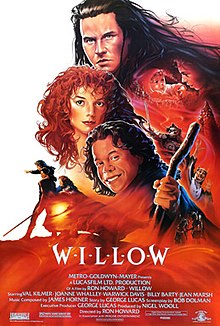One of the many residual effects of the massive
success of the Star Wars trilogy
was the boom of fantasy films that arrived in theaters in the mid-1980s. Movies
such as Legend, Masters of the Universe, The NeverEnding Story, The
Princess Bride, and others were all released within the span of a couple of
years, and each to some degree featured sprawling sets, evocative atmospheres,
and extensive use of prosthetics and puppets. These elements were staples of
George Lucas's storytelling, a quality that proved to be a strong companion to
the Star Wars films' grand
visual and narrative design. It wasn't long after the trilogy had wrapped that
even Lucas himself had dipped into the bankable commercial lore of fantasy
moviemaking when he produced Jim Henson's 1986 film Labyrinth. His
own contribution to the subgenre followed two years later at a time when
fantasy appeared on the decline. With an original story by Lucas, Willow
was met with widespread ambivalence upon its release. Retrospectively, however,
the film's graceless hybrid of Star
Wars-style mythmaking and leftovers from the short-lived fantasy period in
commercial cinema that Lucas inspired offers a pointed reflection and portrait
of the filmmaker that has grown more compelling as the full trajectory of
Lucas’s career has emerged in view.

No comments:
Post a Comment